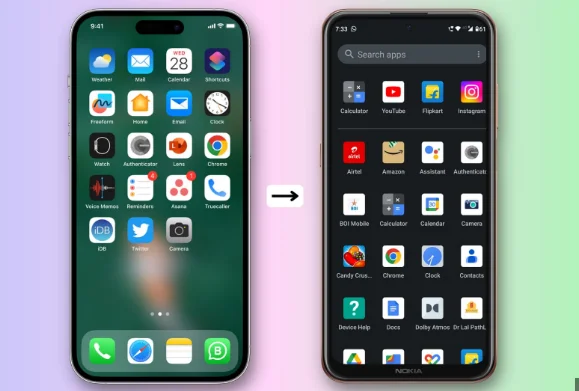How to Use Your Google Home Hub to Save More Energy
The Google Home Hub, also known as the Nest Hub, is not just a smart display for controlling your smart home devices; it can also be a powerful tool for energy management. Here are several ways to leverage your Google Home Hub to save energy:
- Automate Lighting: Connect smart bulbs or plugs to your Google Home Hub to automate lighting schedules. Set routines to turn off lights when not in use, dim lights during the evening, and turn them on only when needed.
- Thermostat Control: Integrate a smart thermostat like the Nest Thermostat with your Google Home Hub. Create temperature schedules that adjust heating and cooling based on when you’re home or away. Use voice commands to adjust the thermostat without leaving your seat, ensuring efficient energy use.
- Monitor Energy Usage: Use compatible smart plugs to monitor the energy consumption of connected devices. The Google Home Hub can display real-time energy usage, helping you identify high-energy appliances and adjust their usage accordingly.
- Control Appliances: Connect appliances like air conditioners, heaters, and fans to smart plugs. Schedule these appliances to turn off when they are not needed or when you leave the house, reducing unnecessary energy consumption.
- Voice-Activated Power Management: Use voice commands to control energy-consuming devices. Say things like “Hey Google, turn off all the lights” or “Hey Google, set the thermostat to 72 degrees” to ensure you use energy only when necessary.
- Set Up Routines: Create customized routines for different times of the day. For example, set a “Goodnight” routine that turns off all lights, adjusts the thermostat, and powers down non-essential devices at bedtime.
- Energy-Saving Tips: Ask your Google Home Hub for energy-saving tips. Say, “Hey, Google, how can I save energy?” to receive practical suggestions and reminders for conserving energy around the house.
- Smart Scheduling: Schedule your appliances and devices to operate during off-peak hours when energy rates might be lower. This can reduce your overall energy costs while still keeping your home comfortable.
- Utilize Ambient Light Sensor: The Google Home Hub’s ambient light sensor can adjust the display brightness based on the room’s lighting, reducing power consumption when full brightness is unnecessary.
- Temperature Management: If you have smart blinds or shades, integrate them with your Google Home Hub to automatically open or close based on the temperature outside. This can help maintain indoor temperatures without over-relying on heating or cooling systems.
- Efficient Charging: Use smart plugs for device chargers and set them to turn off after a certain period, ensuring that devices are not left charging longer than necessary, which can waste energy.
- Energy-Efficient Appliances: If you’re looking for new appliances, look for compatible ones with Google Home. Many modern appliances are designed with energy efficiency in mind and can be easily integrated into your Google Home Hub’s ecosystem.
You can use your Google Home Hub to create a more energy-efficient household by taking advantage of these features and capabilities. Smart automation and real-time monitoring help reduce energy consumption and contribute to a more sustainable lifestyle.
How Does Google Nest Save Energy?
Google Nest devices are designed to optimize energy usage and reduce waste, offering several ways to save energy:
- Smart Thermostats: Google Nest thermostats learn your schedule and preferences, automatically adjusting the temperature to save energy when you’re not home or sleeping. Also, provide energy usage reports and tips for further savings.
- Energy-Saving Modes: Nest thermostats feature Eco Mode, which adjusts temperatures to save energy when you’re away. You can also sense when no one is home and switch to energy-saving settings.
- Integration with Utility Programs: Some Nest devices can participate in energy-saving programs offered by utility companies, which provide incentives for reducing energy usage during peak times.
- Smart Scheduling: Nest devices allow you to create schedules for heating and cooling that align with your daily routines, ensuring your HVAC system runs efficiently and only when needed.
- Remote Control: Using the Nest app, you can control your thermostat from anywhere, making it easy to adjust settings if you forget to do so before leaving home.
What is the Best Way to Use Google Hub?
To get the most out of your Google Home Hub (Nest Hub), consider these best practices:
- Smart Home Integration: Connect your smart home devices (lights, thermostats, security cameras, etc.) to your Google Home Hub for centralized control and automation.
- Voice Commands: Utilize voice commands to control devices, set reminders, check the weather, and more, making your daily tasks more efficient and hands-free.
- Routines: Set up routines for different times of the day, such as “Good Mornin” or “Good N” get,” to automat” multiple actions with a single command.
- Media Center: Use your Hub as a media center to stream music, watch videos, or display photos. Connect your favourite streaming services for seamless entertainment.
- Home Monitoring: Integrate security cameras and doorbells to use your Hub as a monitoring station, providing live feeds and alerts for enhanced home security.
- Information Hub: Keep track of your schedule, weather updates, news, and other important information with customizable cards on your Hub’s display. Does Google Hub use a lot of electricity?
The Google Home Hub (Nest Hub) is designed to be energy-efficient and uses relatively little electricity. On average, it consumes about 2-4 watts in standby mode and slightly more when actively used. Its energy consumption is comparable to a standard LED light bulb, making it an economical addition to your smart home setup.
What is a Google Home Hub Good For?
The Google Home Hub (Nest Hub) is a versatile smart display that offers numerous benefits:
- Smart Home Control: Centralize control of your smart home devices, such as lights, thermostats, locks, and cameras, all from one interface.
- Voice Assistant: Use Google Assistant for hands-free assistance with tasks, reminders, weather updates, and more.
- Entertainment: Stream music, watch videos, and display photos from your favourite services, turning the Hub into a compact media center.
- Routines and Automation: Create routines that automate daily tasks, such as turning off lights and adjusting the thermostat when you leave home.
- Home Monitoring: View live feeds from security cameras and video doorbells, enhancing your home’s security and peace of mind.
- Information Display: Keep track of your calendar, to-do lists, weather forecasts, news updates, and more with customizable information cards.
- Intercom System: Use the broadcast feature to send messages to other Google Home devices throughout your home, functioning as an intercom system.
By leveraging these features, the Google Home Hub can serve as a central hub for convenience, entertainment, and energy management in your smart home ecosystem.




